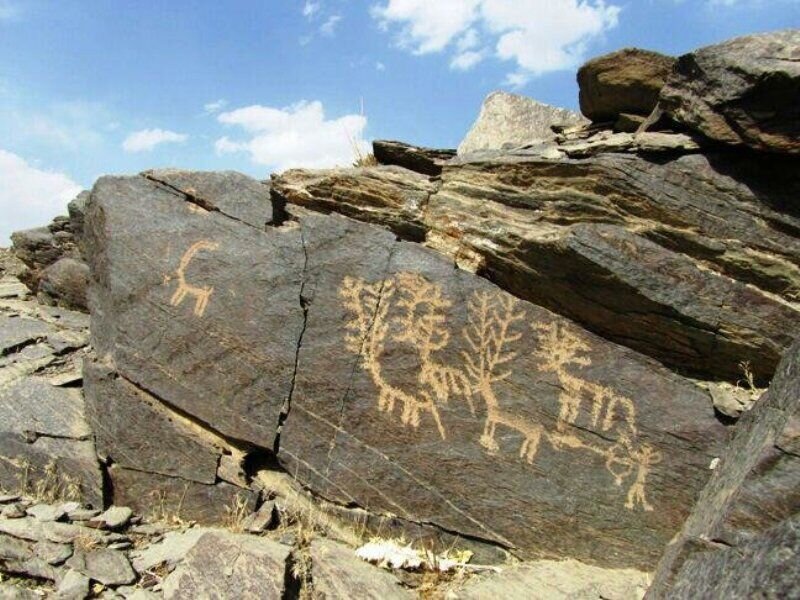Ancient rock artworks discovered in northeast Iran

TEHRAN – Collections of ancient rock engravings have been discovered in a mountainous area south of Mashhad, northeast Iran.
“Four groups of ancient petroglyphs have been discovered and documented,” IRNA quoted a local official in charge of cultural heritage protection as saying on Tuesday.
The petroglyphs depict various motifs such as rams, mountain goats, the image of a man with a bow in his hand as well as hunting scenes, Mahmoud Toghraei said.
“The discoveries were made during a recent archeological survey conducted to identify and document historical relics and sites in the southern highlands of Mashhad,” the official explained.
The rock engravings, based on preliminary studies, are estimated to date from 1,000 to 6,000 years ago… However, further studies are underway to find their exact dates.
These ancient rock artworks will become a tourism destination after the works are documented and well protected for the next generations, the official explained.
The Iranian plateau was roamed by the Neanderthals. A 2019 study published in the Journal of Human Evolution, suggests that Neanderthals were roaming over the Iranian Zagros mountain range between 40 to 70 thousand years ago.
Until the late 20th century, Neanderthals were regarded as genetically, morphologically, and behaviorally distinct from living humans. However, more recent discoveries about this well-preserved fossil Eurasian population have revealed an overlap between living and archaic humans.
Neanderthals lived before and during the last Ice Age of the Pleistocene in some of the most unforgiving environments ever inhabited by humans. They developed a successful culture, with a complex stone tool technology, that was based on hunting, some scavenging, and local plant collection. Their survival during tens of thousands of years of the last glaciation is a remarkable testament to human adaptation.
Zagros mountain range in southwestern Iran, extending northwest-southeast from the border areas of eastern Turkey and northern Iraq to the Strait of Hormuz, is about 990 miles (1,600 km) long and more than 150 miles (240 km) wide. It forms the extreme western boundary of the Iranian plateau, though its foothills to the north and west extend into adjacent countries.
According to Britannica, the oldest rocks in the Zagros range date to Precambrian time (that is, before 541 million years ago), and the Paleozoic Era rocks date to between 541 million and 252 million years ago and are found at or near the highest peaks.
Most of the rocks in the mountain range, however, are limestone and shale from the Mesozoic Era (252 million to 66 million years ago) and the Paleogene Period (66 million to 23 million years ago). The range was primarily formed by orogenies (mountain-building episodes) driven by the movement of the Arabian Plate underneath the Eurasian Plate during the Miocene and Pliocene epochs (23 million to 2.6 million years ago).
AFM

Leave a Comment